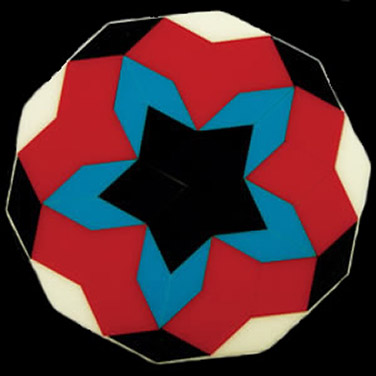Tessellations

The aim of tessellations is to fill the plane with geometric shapes, without any overlaps or gaps. Players can restrict themselves to congruent polygons or contemplate several different kinds of polygons. If the geometric shapes are coloured, a pretty pattern can emerge when the plane is covered.
Two rhombuses with the same side length and an acute angle of 36° or 72° produce particularly interesting tessellations. In the 1970s, these and other tessellations discovered by mathematician and physicist Roger Penrose were also patented as games.
History
The mosaic, i.e. the piecing-together of coloured stones or fragments of glass to form flat ornaments or pictures, was already a common artistic technique in antiquity. It therefore stands to reason that the recreational use of mosaic tiles is just as old. Nowadays, tessellation puzzles are still extremely common as children's games.
Mathematics
Which polygons fill the plane is an interesting question. Any triangle fills the plane. Simply form a parallelogram by joining two triangles at the base and use the parallelograms to make stripes, which fill the plane. Likewise, any quadrangle will allow tessellations. However, the plane cannot be covered with any pentagon or hexagon.
Symmetrical tessellations, which merge into themselves through twists, reflections and translations, are particular interesting. In 1924 Georg Polya and Paul Niggli demonstrated independently of one another that all symmetrical tessellations can be classified according to seventeen patterns. Moreover, periodicity, i.e. invariance regarding translation, is a key topic. The discovery of aperiodic tessellations by Roger Penrose and others in the 1970s led to important developments in the study of quasicrystals later on.